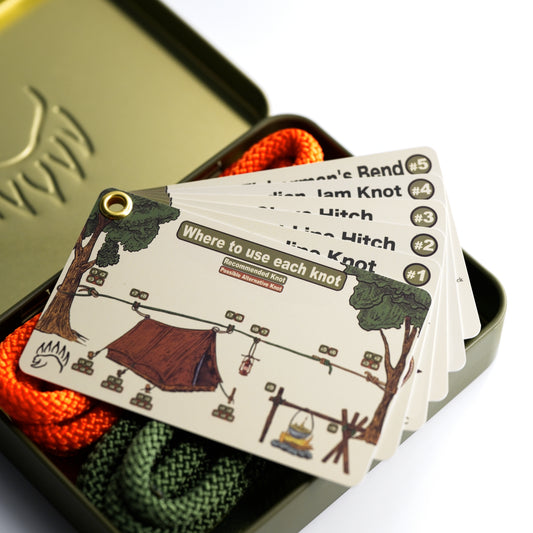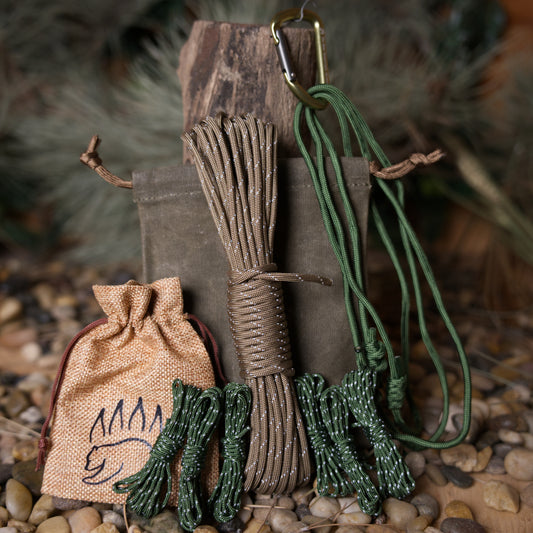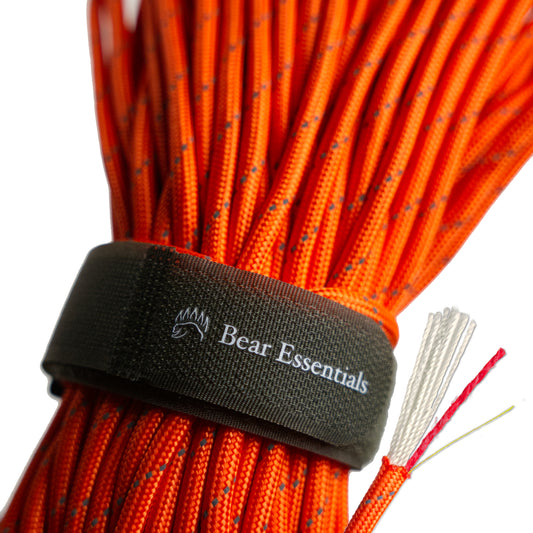How to Tie the Wall Knot
Usage
The Wall Knot is commonly used to create a bulky stopper at a rope’s end, preventing it from slipping through a block or eye. It’s simpler to tie than other stopper knots, making it suitable for smaller ropes and providing a compact design ideal for adding weight to throwing lines.
Why Learn the Wall Knot?
The Wall Knot is a reliable and simple stopper knot, perfect for tasks involving small ropes, such as in boating, fishing, or general utility work. Its quick tie and compact design make it an excellent choice for anyone handling ropes regularly.
Common Uses
-
Boating/Marine:
- Stops ropes from slipping through cleats or pulleys.
- Adds weight to heaving lines for throwing.
-
Fishing:
- Secures tackle to prevent slipping on lines.
- Stops knots from pulling through small loops.
-
Utility:
- Prevents fraying on rope ends in household tasks.
- Secures cords for bundling items.
ABOK Number
(Ashley Book of Knots)
Other Names
Category
|
Notable Features
- Compact Stopper: Prevents rope ends from pulling through pulleys or eyes.
- Quick to Tie: Forms easily with minimal rope, ideal for fast setups.
- Weighted End: Adds bulk for throwing heaving lines in boating.
- Versatile Use: Works in fishing, boating, or household rope management.
Variations
No true variations are listed in the JSON for the Wall Knot. For added security, tuck the strands an extra time before tightening or pair with a backup overhand knot to prevent unraveling under strain.
Similar Knots
Double Overhand Stopper vs. Wall Knot
- Pros: Bulkier and more secure for high-load applications.
- Cons: Harder to untie and requires more rope than the Wall Knot.
Ashley’s Stopper Knot vs. Wall Knot
- Pros: Provides greater bulk and grip, ideal for heavy-duty tasks.
- Cons: More complex to tie and less suited for quick, simple stoppers.
History
The Wall Knot traces its origins to maritime traditions, where it was used to prevent rope ends from slipping through blocks or to weight lines for throwing. Referenced in The Ashley Book of Knots (#787), it’s valued for its simplicity and effectiveness in nautical settings. Its adoption in fishing and utility tasks reflects its adaptability for creating reliable stoppers in various outdoor and household scenarios. Source: The Ashley Book of Knots
Security Level
The Wall Knot provides moderate security as a stopper, effectively preventing rope ends from slipping through small openings. It holds well under light to moderate loads but may unravel if not tightened properly or if used without a backup knot on slick ropes. Adding an overhand knot below enhances reliability for critical tasks.
Downsides
- Limited strength: Can unravel under heavy or dynamic loads without reinforcement.
- Rope type: Works best with three-strand ropes, less effective with braided lines.
Structure
- Unlay the rope’s end slightly to separate the strands (typically three).
- Take one strand and pass it over the adjacent strand, forming a loop.
- Pass the next strand over the first and through the loop of the previous strand.
- Repeat with the third strand, tucking it through the loop of the second strand.
- Pull all strands gently to tighten the knot, forming a compact stopper.
Pro Tip: Ensure strands are evenly tensioned to avoid a loose knot. For extra security, tie an overhand knot below the Wall Knot.
FAQ
Is the Wall Knot strong enough for heavy loads?
It’s reliable for light to moderate tasks but needs a backup knot for heavy loads to prevent unraveling.
What’s the best rope for the Wall Knot?
Three-strand natural or synthetic ropes like nylon or manila work best for easy tying and secure holds.
How does the Wall Knot compare to the Double Overhand Stopper?
The Wall Knot is quicker to tie but less bulky and secure than the Double Overhand for heavy-duty use.
Can the Wall Knot be used in climbing?
It’s not suitable for climbing due to its moderate strength; use knots like the Figure Eight instead.
Why choose the Wall Knot over other stopper knots?
Its simplicity and compact form make it ideal for quick stoppers in boating or fishing tasks.
Important Notes on Safety
Common failure points include loose strands or inadequate tightening, which can cause the knot to unravel. Always verify the knot is snug and test it under light load before use. Check rope condition for fraying before tying. Ensure all strands are evenly tensioned. Practice tying in low-stakes settings first.







